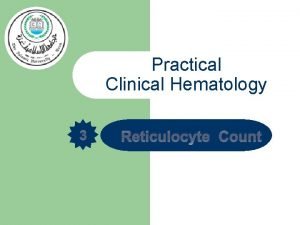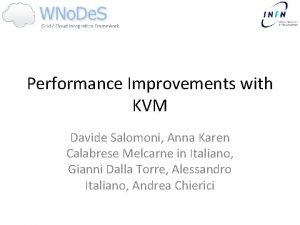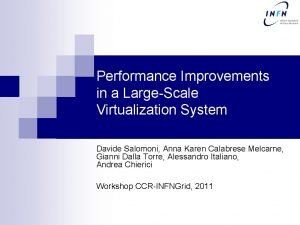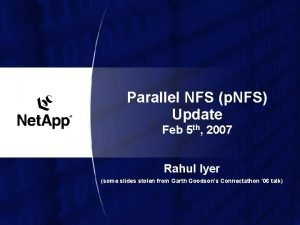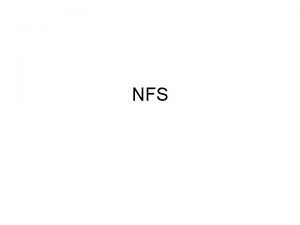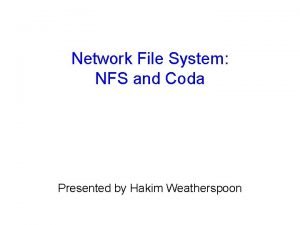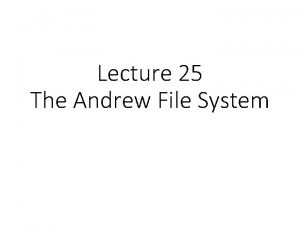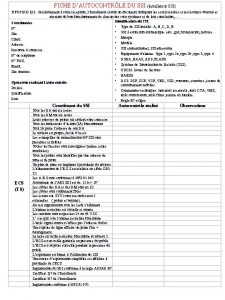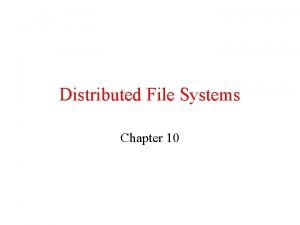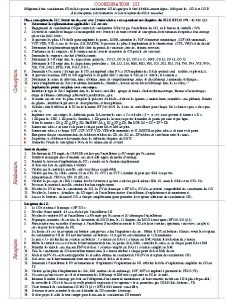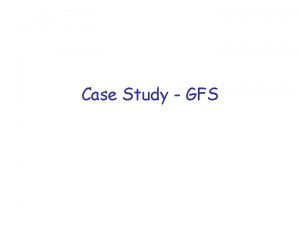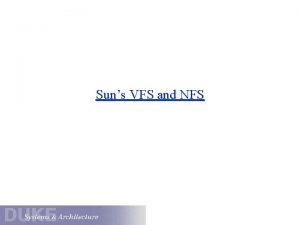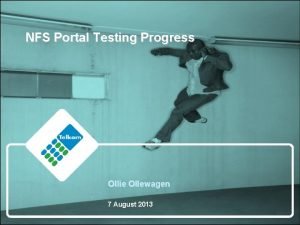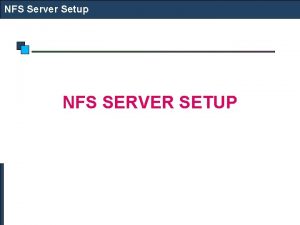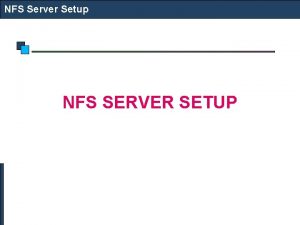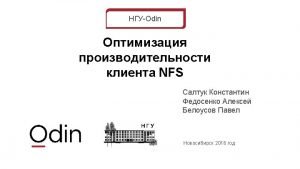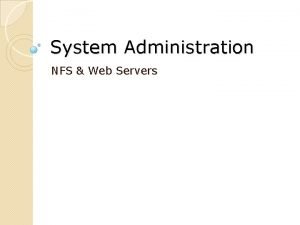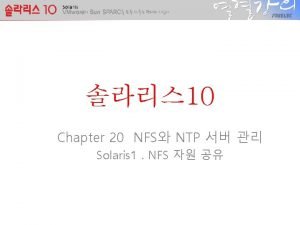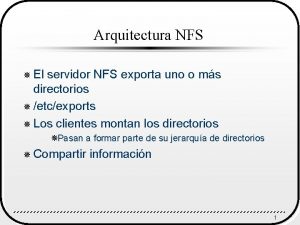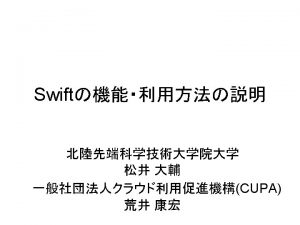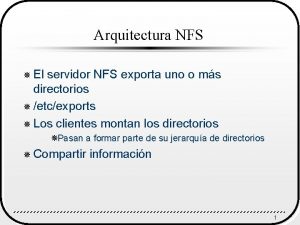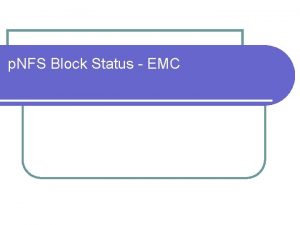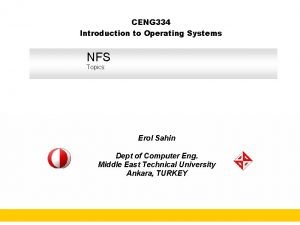Introduction to NFS v 4 and p NFS














- Slides: 14

Introduction to NFS v 4 and p. NFS PRESENTATION TITLE GOES HERE David Black, SNIA Technical Council, EMC slides by Alan Yoder, Net. App with thanks to Michael Eisler and Brent Welch

NFS v 4. 0 Under development from 1998 -2005 primarily driven by Sun, Netapp, Hummingbird some University involvement (CITI UMich, CMU) systems beginning to ship available in Linux © 2008 Storage Networking Industry Association. All Rights Reserved.

NFS v 4. 0 Mandates strong security be available Every NFSv 4 implementation has Kerberos V 5 You can use weak authentication if you want Easier to deploy across firewalls (only one port is used) Finer grained access control Goes beyond UNIX owner, group, mode Uses a Windows-like ACL Read-only, read-mostly, or single writer workloads can benefit from formal caching extensions (delegations) Multi-protocol (NFS, CIFS) access experience is cleaner Byte range locking protocol is much more robust Recovery algorithms are simpler, hence more reliable Not a separate protocol as in V 3 © 2008 Storage Networking Industry Association. All Rights Reserved.

NFS v 3 and v 4 compared NFSv 3 A collection of protocols (file access, mount, lock, status) Stateless UNIX-centric, but seen in Windows too Deployed with weak authentication 32 bit numeric uids/gids Ad-hoc caching UNIX permissions Works over UDP, TCP Needs a-priori agreement on character sets NFSv 4 One protocol to a single port (2049) Lease-based state Supports UNIX and Windows file semantics Mandates strong authentication String-based identities Real caching handshake Windows-like access Bans UDP Uses a universal character set for file names © 2008 Storage Networking Industry Association. All Rights Reserved.

p. NFS history Idea to use SAN FS architecture for NFS originally from Gary Grider (LANL) and Lee Ward (Sandia) Development driven by Panasas, Netapp, Sun, EMC, IBM, UMich/CITI Folded into NFSv 4 minor version NFSv 4. 1 in 2006 © 2008 Storage Networking Industry Association. All Rights Reserved.

p. NFS Essentially makes clients aware of how a clustered filesystem stripes files Files accessible via p. NFS can be accessed via nonparallel NFS (and in the case of filers, CIFS, and other file access protocols) Benefits workloads with many small files very large files Three supported methods of access to data: Blocks (FC, i. SCSI) Objects (OSD) Files (NFSv 4. 1) © 2008 Storage Networking Industry Association. All Rights Reserved.

p. NFS architecture data p. NFS Clients met ada ta l tro n o c NFSv 4. 1 Server Block (FC) / Object (OSD) / File (NFS) Storage © 2008 Storage Networking Industry Association. All Rights Reserved.

p. NFS architecture data p. NFS Clients met ada ta ol tr con NFSv 4. 1 Server Block (FC) / Object (OSD) / File (NFS) Storage Only this is covered by the p. NFS protocol Client-to-storage data path and server-to-storage control path are specified elsewhere, e. g. SCSI Block Commands (SBC) over Fibre Channel (FC) SCSI Object-based Storage Device (OSD) over i. SCSI Network File System (NFS) © 2008 Storage Networking Industry Association. All Rights Reserved.

p. NFS basic operation Client gets a layout from the NFS Server The layout maps the file onto storage devices and addresses The client uses the layout to perform direct I/O to storage At any time the server can recall the layout Client commits changes and returns the layout when it’s done p. NFS is optional, the client can always use regular NFSv 4 I/O layout Storage Clients NFSv 4. 1 Server © 2008 Storage Networking Industry Association. All Rights Reserved.

p. NFS protocol operations LAYOUTGET (filehandle, type, byte range) -> type-specific layout LAYOUTRETURN (filehandle, range) -> server can release state about the client LAYOUTCOMMIT (filehandle, byte range, updated attributes, layout-specific info) -> server ensures that data is visible to other clients Timestamps and end-of-file attributes are updated GETDEVICEINFO, GETDEVICELIST Map device. ID in layout to type-specific addressing information © 2008 Storage Networking Industry Association. All Rights Reserved.

p. NFS protocol callbacks CB_LAYOUTRECALL Server tells the client to stop using a layout CB_RECALLABLE_OBJ_AVAIL Delegation available for a file that was not previously available © 2008 Storage Networking Industry Association. All Rights Reserved.

p. NFS read Client: LOOKUP+OPEN NFS Server: returns file handle and state ids Client: LAYOUTGET NFS Server: returns layout control path Client: many parallel READs to storage devices Storage devices: return data path Client: LAYOUTRETURN NFS server: ack control path Layouts are cacheable for multiple LOOKUP+OPEN instances Server uses CB_LAYOUTRECALL when the layout is no longer valid © 2008 Storage Networking Industry Association. All Rights Reserved.

p. NFS write Client: LOOKUP+OPEN NFS Server: returns file handle and state ids Client: LAYOUTGET NFS Server: returns layout Client: many parallel WRITEs to storage devices Storage devices: ack Client: LAYOUTCOMMIT NFS server: “publishes” write Client: LAYOUTRETURN NFS server: ack control path data path control path Server may restrict byte range of write layout to reduce allocation overheads, avoid quota limits, etc. © 2008 Storage Networking Industry Association. All Rights Reserved.

What p. NFS doesn’t give you Improved cache consistency NFS has open-to-close consistency Perfect POSIX semantics in a distributed file system Clustered metadata Though a mechanism for this is not precluded J © 2008 Storage Networking Industry Association. All Rights Reserved.
